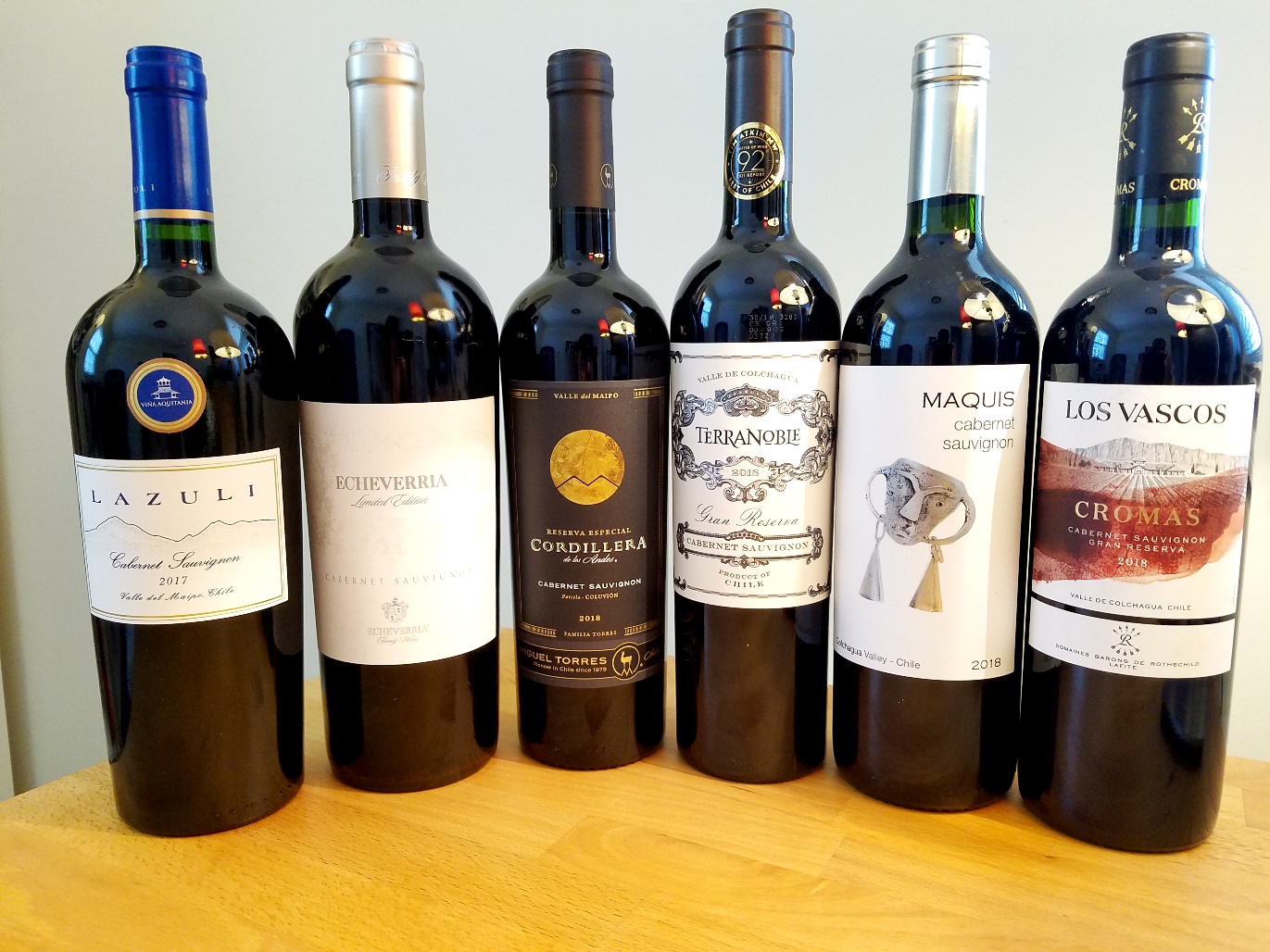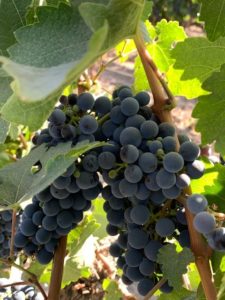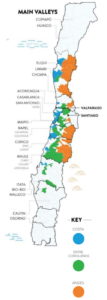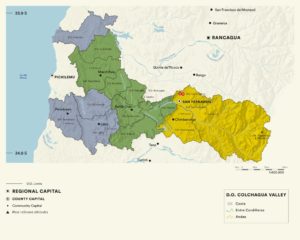3 Chilean Cabernet Sauvignon Takeaways: Delving Deeper into Colchagua and Maipo Valley in Chile’s Central Valley
If you love cabernet sauvignon, you’re likely familiar with Chilean cabernet sauvignon.
I recently took a deep-dive into Chilean cabernet sauvignon from Colchagua and Maipo Valley, and here are three takeaways I came away with that might be helpful to you as you navigate Chilean cab.
1) Chilean cabernet sauvignon remains a great value especially as cabernet sauvignon prices creep up in the U.S.
Cabernet-sauvignon lovers in the U.S. are keenly aware that premium expressions of the grape often come with a hefty price tag to match.
This is especially true of Napa Valley cabernet sauvignon where prices have skyrocketed over the decade.
Chile has a history of producing premium cabernet sauvignon but at affordable prices especially for the quality level.
This comes in part due to investments Chile made back in the 1990s that modernized winemaking practices for the crucially-important export market that accounts for 70% of its wine production.
Cabernet sauvignon is the most widely-planted grape varietal in Chile accounting for over 20% of vineyard plantings, so Chile has a keen interest in making sure it produces cabernet sauvignon that you enjoy drinking.
Whenever I’m in a restaurant and someone at my table indicates a preference for cabernet sauvignon, I always look to Chile before California.
And not only is Chilean cabernet sauvignon typically cheaper, it is often times more interesting (more later on takeaway #3).
2) Colchagua and Maipo Valley both offer attractive cabernet-sauvignon expressions.
Colchagua and Maipo Valley are both prominent, cabernet-sauvignon-producing regions that you are likely to find examples of in your local wine shop.
Having tasted cabernet sauvignon from both regions which are located in Chile’s Central Valley, it’s clear both regions have something to offer cabernet-sauvignon drinkers.
Maipo Valley has a reputation for producing cabernet sauvignon that can sometimes have a slightly-minty character, while Colchagua is known for producing full-bodied reds.
While I like wines from both regions, I have a slight preference for reds from Colchagua as I’ve appreciated the midpalate expressiveness in many of these wines.
If you’re visiting Santiago, you’ll find Maipo Valley perfectly-suited for a quick day visit because its located just on the outskirts of the capital.
Colchagua is a bit further south, and will require more dedicated time to explore.
3) Chilean cabernet sauvignon is often distinguished by the small addition of carmenere to the blend which gives it a uniquely Chilean bent.
In order for a wine to be labeled a single-varietal, such as cabernet sauvignon, it must contain at least 85% of the lead grape.
This means that up to 15% of any single-varietal-labeled wine outside of the U.S. (and 75% of any single varietal wine made within the U.S.) can be made from other grapes.
While this blending and labeling reality is not something the wine industry often spends time educating consumers about, this is what gives Chilean cabernet sauvignon its distinctiveness because often some portion of carmenere is included in the blend.
Carmenere adds herbaceous, herbal and red-pepper aromas to a blend.
Carmenere originated in France but is now grown almost entirely in Chile, so if you taste Carmenere in a cabernet sauvignon it’s a good chance the wine you’re drinking is from Chile.
This is what makes Chilean cabernet sauvignon more interesting.
While there are certainly 100% cabernet-sauvignon wines being made in Chile, the addition of carmenere is distinctly Chilean.
If you’re interested in learning more about carmenere, see this post.
Chilean cabernet sauvignons I’ve enjoyed from Colchagua and Maipo Valley.
Below are reviews of some cabernet sauvignons I’ve enjoyed from Colchagua and Maipo Valley.
Don’t fret over brands.
Start with whatever is available in your local wine shop to move forward in your Chilean, cabernet-sauvignon journey.
Colchagua
- Los Vascos, Cromas Gran Reserva Cabernet Sauvignon 2018, Colchagua Valley, Chile (Wine Casual, 91 Points)
- TerraNoble, Gran Reserva Cabernet Sauvignon 2018, Colchagua, Chile (Wine Casual, 91 Points)
- Viña Maquis, Gran Reserva Cabernet Sauvignon 2018, Colchagua Valley, Chile (Wine Casual, 91 Points)
Maipo Valley
-
Echeverria, Limited Edition Cabernet Sauvignon 2016, Maipo Valley, Chile (Wine Casual, 90 Points) - Miguel Torres, Reserva Especial Cordillera de los Andes Cabernet Sauvignon 2018, Maipo Valley, Chile (Wine Casual, 91 Points)
- Viña Aquitania, Lazuli Cabernet Sauvignon 2017, Maipo Valley, Chile (Wine Casual, 92 Points)






